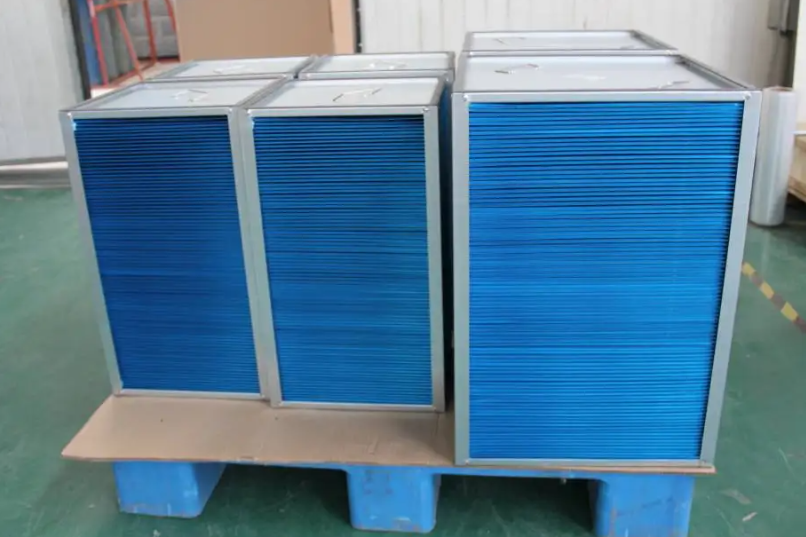
Introducción: El núcleo de intercambio de calor es un núcleo de intercambio de calor de flujo cruzado, en el que dos corrientes de aire con diferentes temperaturas fluyen en un flujo cruzado positivo, y el intercambio de calor ocurre entre los dos fluidos, con sus canales completamente separados.
Los intercambiadores de calor de placas de flujo cruzado se pueden aplicar a unidades de tratamiento de aire como componente principal de la recuperación de calor. También se pueden aplicar a sistemas de ventilación, instalándose en conductos de aire como componente principal de la sección de recuperación de calor, y su posición de instalación se puede cambiar con flexibilidad.

Escenarios de aplicación: Soluciones de recuperación de calor residual para máquinas de recubrimiento, máquinas laminadoras, etc., soluciones de recuperación de calor para secar vegetales, nueces, piel de camarón y pescado seco, recuperación de calor residual para salas de horneado de pintura, tecnologías de ahorro de energía para la recuperación de calor residual de gases de escape como calderas y electricidad de fábrica.
La estructura del módulo puede proporcionar cualquier combinación de tamaño y altura de apilamiento para satisfacer diversas aplicaciones de flujo de aire y escenas.
Material: Según las condiciones de trabajo en el sitio, hay varios materiales disponibles para seleccionar, como papel de aluminio hidrófilo, papel de aluminio de resina epoxi, acero inoxidable, etc.
